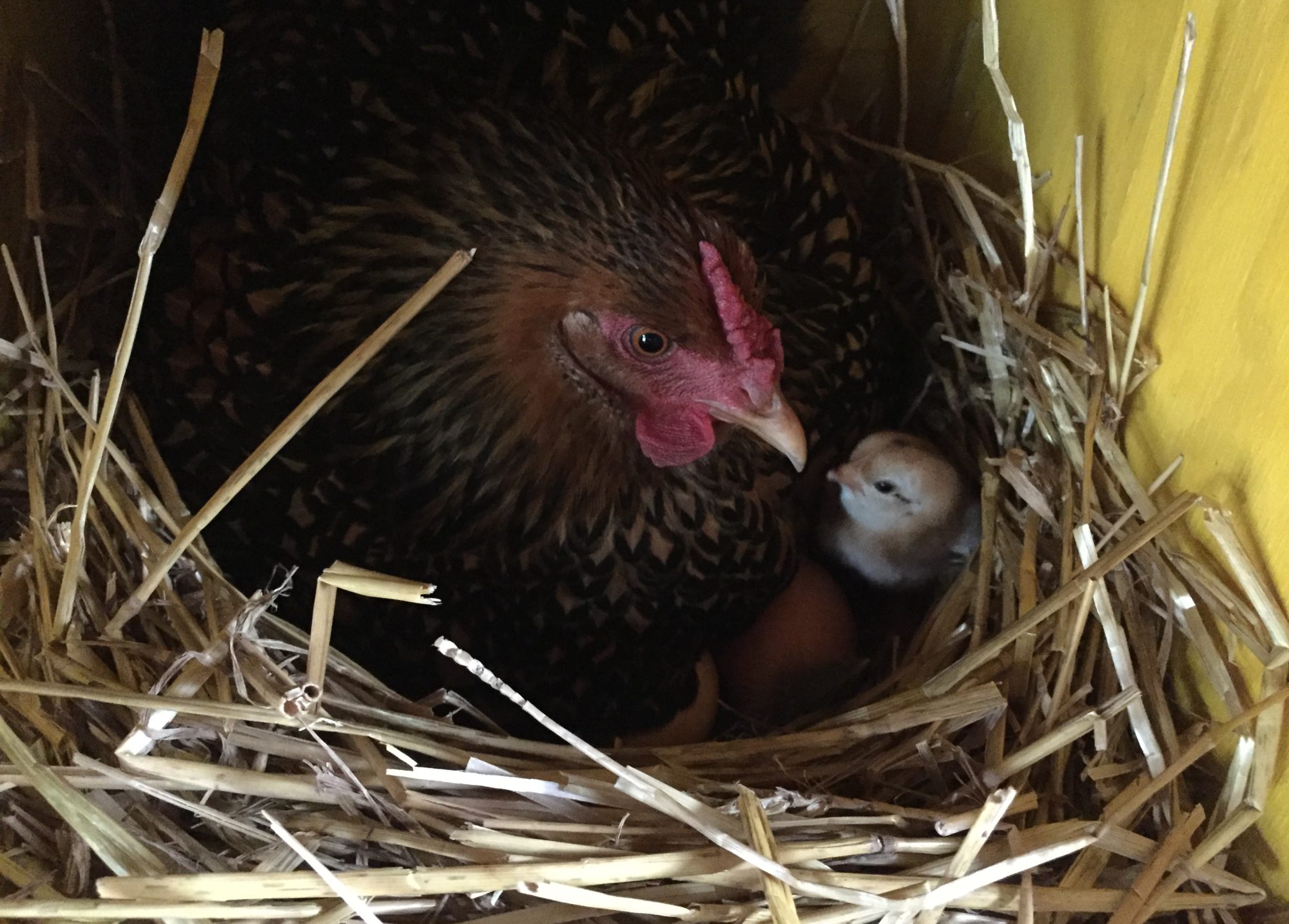
If you are unfamiliar with the difference between meat chickens and heritage chickens, this is a good visual. A heritage chicken is on the left and the modern day meat chicken is on the right.
The meat chicken, or Cornish Cross, is a combination of two chickens, the Cornish rooster and the White Plymouth Rock. It was first bred in the late 1950’s as a result of a contest with a $5,000 prize! The cross has been selectively bred for the past 60 years to produce a chicken that grows twice a fast with breast meat so large “you can cut it like a steak”, which was the original goal. The chicken you buy at the store is Cornish Cross, and it’s only 7-8 weeks old when processed.
The Cornish Cross (also called Cornish Rock) breeding program is owned by “big chicken”. The birds do not reproduce, mainly because they die of heart attacks or break legs before becoming sexually mature. They’re just too big and lazy to mate, but even if they did, the result won’t be another Cornish Cross. They are also a very fragile bird. A mortality rate of 10-20% is not uncommon.
What that means to homesteaders is that Cornish Cross is not a sustainable meat source. You buy chicks from the hatchery, raise them, process them, and then buy more. If the hatchery goes away, no more Cornish Cross.
If you are old enough to remember eating chicken in the 1950’s, then you ate heritage chicken. Heritage chicken is what we have running all over our yard. Certain breeds lend themselves to being “dual purpose”, meaning good for eggs and meat. Breeds like Rhode Island Red, Plymouth Rock, and Orpingtons are considered “heavy breeds” that are good for meat. Heritage breeds are sustainable, meaning they mate and hatch more. Homesteaders of old would let their chickens hatch new chicks, and eat the young roosters before they got tough (usually around 5-6 months old). Later they would process the old hens to make soups, stock, and the most delicious chicken and dumplings!
Heritage chickens have much less breast meat and longer legs, but a much deeper flavor because they are older and have more time to develop flavor. Heritage chickens (or young roosters) are popular with our customers that grew up in another country. It’s what they ate in the village where they grew up. They also tell us that the chicken in the store has no flavor!
We tend to have more young rooster meat available because we incubate to replace old hens, and half of the chicks turn out to be roosters. It’s tastier chicken to us, but if we show it to customers that grew up here, they say “What happened to your chicken?”.
So now you know.


